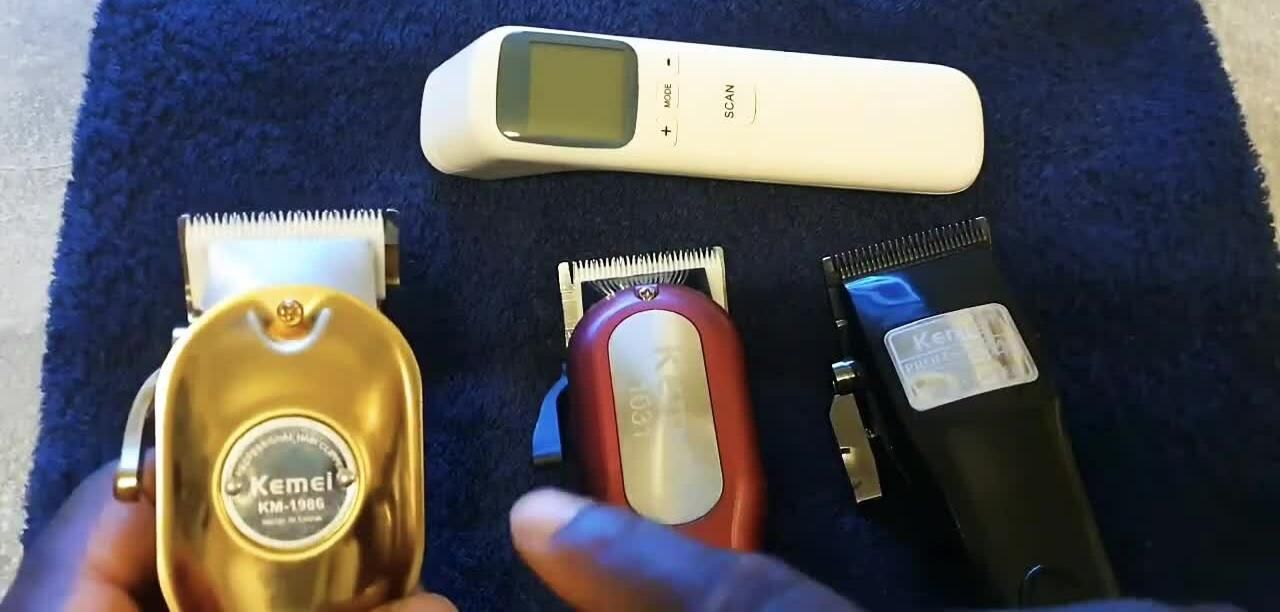This article presents a comparative heat test of three Kemei hair clippers: the vintage 1986 model, the Kemei 1031, and the Kemei 2850 PG. All clippers feature ceramic blades, allowing for a consistent evaluation of heat generation. The experiment aimed to determine which model produced the most heat after a five-minute run, taking into account the differing materials of each clipper—metal for the 1986 model and plastic for the 1031 and 2850 PG.The test involved a simple setup: each clipper ran for five minutes, after which their temperatures were measured. While the results showed minor variations, with the 1986 model registering the highest temperature (36.2°C), the differences were not significant enough to declare a clear winner. This heat test provides a preliminary comparison, highlighting the need for further evaluation considering factors like cutting performance and battery life before making a purchase decision.
Read more: Top 9 Best Manual Hair Clippers
The Heat Test Setup
This experiment compares the heat generated by three Kemei hair clippers: the vintage 1986 model, the Kemei 1031, and the Kemei 2850 PG. All three clippers feature ceramic blades, ensuring a fair comparison.

Each clipper was turned on and allowed to run for five minutes. The goal was to determine which clipper generated the most heat after this period.

The models' materials differed significantly; the 1986 model is metal, while the 1031 and 2850 PG are plastic. This difference might influence heat dissipation.

Five Minutes of Heating
The experiment involved a simple setup. The clippers were left running for five minutes to allow them to heat up appropriately.

The presenter highlights the equal footing of the clippers, emphasizing that all three possess ceramic blades, although they vary in color (black for one, white for the others).

After the five-minute period, the clippers were examined to gauge the level of heat generated by each model.

Results and Conclusion
The video fast-forwards through the five-minute waiting period, but the final temperature readings are revealed as approximately 33.3°C, 36.2°C, and 35.5°C for each clipper.

The Kemei 1986 model (metal) shows a temperature of 36.2°C and performs the best compared to the other two. However, the temperature differences are minimal.

While the results indicate some variation, it's important to note that the temperatures recorded are not excessively high for any of the clippers.

Overall Assessment
Based on this simple heat test, the Kemei 1986 model showed slightly higher temperatures than the newer plastic models. However, the differences were not significant, suggesting all three clippers run at a relatively safe temperature.

The test doesn't provide sufficient data to definitively say one clipper is superior. Further testing, such as examining cutting performance and battery life, would be needed for a more comprehensive comparison.
Ultimately, the choice between these clippers would depend on individual preferences. While the 1986 model proved slightly warmer, the difference may not be crucial for most users. Consider other factors such as style, build quality, and price before selecting a hair clipper.
